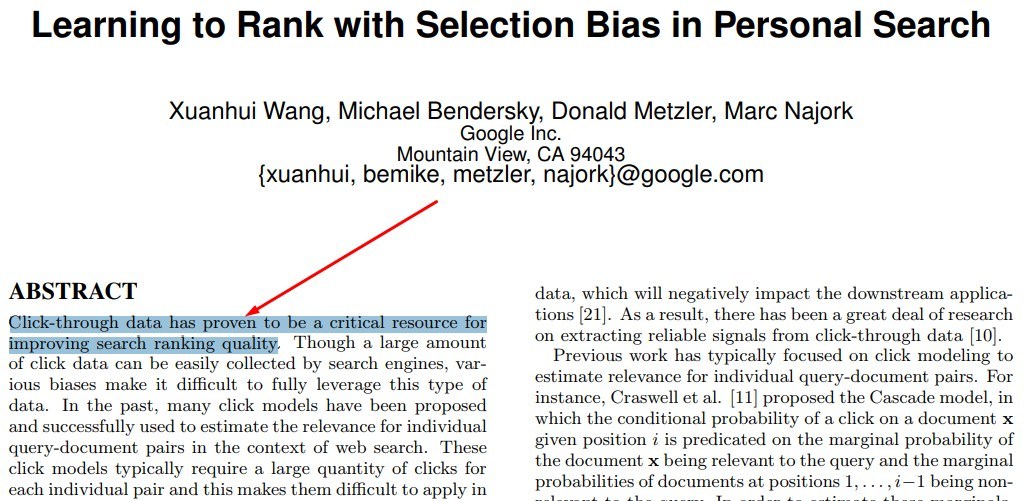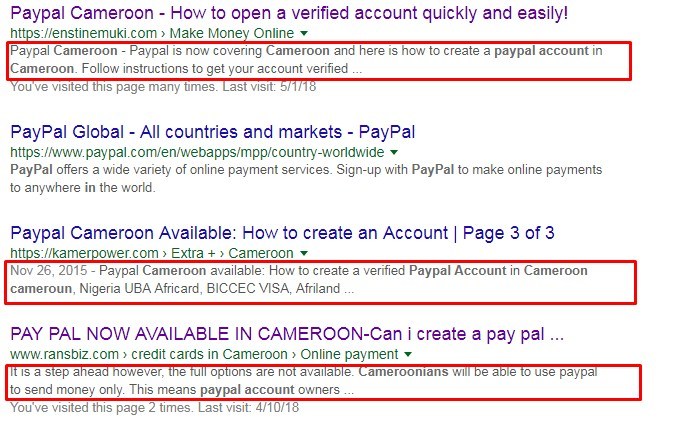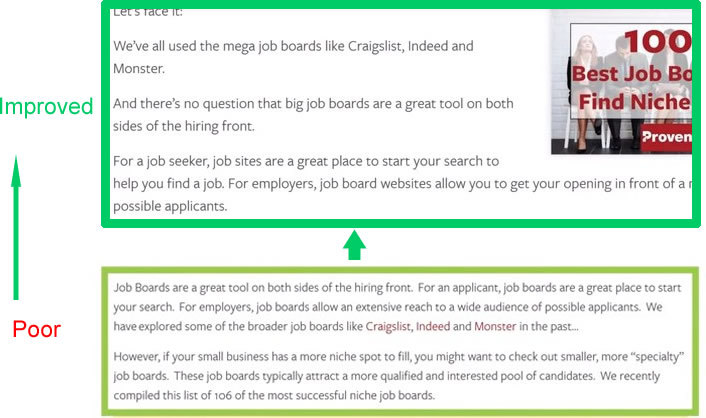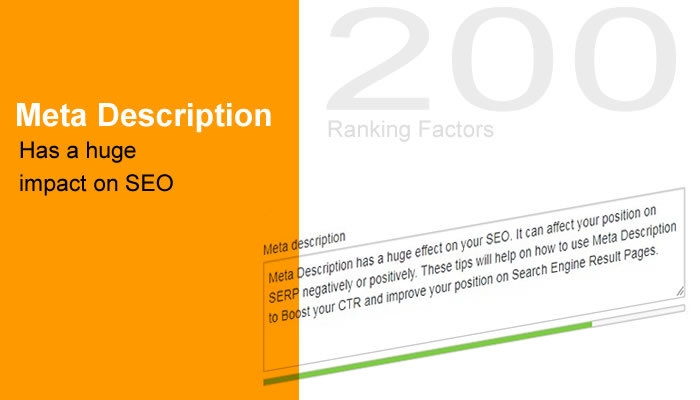Meta description of your web pages is a big SEO element and that’s final.
It has a huge part to play when it comes to your overall search engine optimization strategies. But is it one of Google’s ranking factor? We’re soon going to find out.
As a starter in SEO industry, the meta description is that snippet of up to 320 characters that summarizes a page’s content. its main purpose is to get the visitor on search engines to click your link.
Major search engines don’t consider your page meta description to determine the ranking position of your page. However this element can deliver strong signals to Google.
The signals help the search giant understand your page relevance and usefulness through interpretation of searcher’s intent.
Everyone doing SEO (Content or Technical) is aiming at three things:
- Get indexed by Search engines, principally Google
- They want a good ranking position, mainly position #1 on page #1
- And finally, get natural clicks to those ranked pages.
Watch this: Take a look at these SEO Tips for Bloggers that Will Help Skyrocket your Google Rankings
Meta description doesn’t have any innate capacity to affect point 1. As a matter of fact, it comes in to affect your point 3 – It has a huge impact on Click-through-rate, which now pushes us back to point 2.
Though the meta description is not considered a ranking factor, it has a massively overlooked impact on your ranking. It can indirectly push your listing up or down Search Engine Result Pages (SERPs)
How does meta description affect your SEO Ranking?
Whether you like it or not, meta description has an indirect impact on your page ranking. It remains a key factor to underline when it comes to OnPage SEO.
To understand this, let’s take a closer look into Click-Through-Rates (CTR) and how Google’s Rankbrain monitors and uses it.
What is CTR?
This is the ratio of users who click on a specific link to the number of total users who view a page.
If 3500 Google visitors run a search and your web page shows up 1000 times, It means you’ve got 1000 Impressions.
What if 350 (out of the 1000 ) searchers click your link on SERP to visit your site? It means your CTR is 35%
This is: (350×100)/1000 = 35%
I hope that’s easy to understand.
CTR is a huge ranking factor
A recently published Google research paper states that CTR data has proven to be a critical resource to improve search ranking quality.

Now, here is sample meta description on SERP. Let’s see which of this can provoke and attract more clicks from searchers:

I have highlighted 3 different entries with different meta descriptions. These searchers are looking for how to create a Verified Paypal Account in Cameroon.
Though these entries are on page 1, they don’t have the same attraction force. Based on the Meta Title and Description, these entries get their respective CTR.
The page Title has a point of course. But the Description gives more value to the expected page.
If the same query is made by 2000 searchers and these same results come up, Google will compute the clicks against each entry. If the 3rd entry gets the most clicks, Google will certainly think the 1st entry has a problem that accounts for its low CTR. The problem could be that the Meta Description is NOT saying the exact thing the searchers want.
Entry on #4 is less relevant
Now if someone runs the keyword “create paypal account cameroon” and gets this same result, you agree with me that entry on position #4 will be less relevant. The description doesn’t tell the searcher ‘hey this is what you want’
Look at entries 1 & 3. These will likely get the most portion of those clicks. Combining the article Title and Description of entry at position #1, this makes it the most attraction on this SERP.
With time, Google’s Rankbrain will be watching user behaviors on the Search Terms, SERP Elements and CRT. The entry that gets less clicks will gradually be shifted out of its previous position.
Poor Meta Description = Disappointing CTR = Negative signal to Rankbrain. This will result to losing your rankings on SERP.
The simple reason is that Google wants to give the best to its users. So why keep an entry on priority position when it does not meet the requirements?
Here are other Meta Description related factors that can kill your ranking
Searchers who find your entry on SERP and click the link have different ways to react based on many factors. They can quickly hit the back button on their browser, close your page down completely or hang around for more interactions:
– > Pogo Sticking
I have written about this effect before. So I recommend you click here to read the article and see how it affects your ranking.
– > Bounce Rate
This is the percentage of visitors who click to your page and leaves without visiting other pages on your site. This is different from Pogo Sticking, which happens when the visitor clicks the back button of the browser.
Technically, a Bounce Rate is referred to as a single-page session on your site. High Bounce Rate is not necessarily a bad thing though. However, if this is a result of a misleading Meta Description and Title on SERPs, then you have a big case.
– > Dwell Time
This is the amount of time a visitor from Google search spends on your site after clicking your result on SERP. The more time someone spends on your site from the search result page, the more your changes of getting a ranking boost. Google would take this as having succeeded in pointing the searcher to the right resource.
But if someone bounces off in few seconds, it tells Google “this is shit” and Rankbrain will have negative feedback and may drop down the result a few spots.
How to help Meta Description give Google the right rank boosting signals.
Meta Description is essentially to help searcher find our content. But as you’ve seen, Google can use this element to interpret user intent and decide what to do with your entry on SERP. Here are a few points to help you craft attractive meta description to boost your CTR, reduce Pogo Sticking and highly increase Dwell Time:
-> Whip your CTR up: Use same keywords in your Title and Description
Keywords are the main key to open the door to your articles. Use your Focus Keyword in your page Title, Content as well as Description tag. Let your description throw more light on your keyword, of course describing most appropriately, the content of your linked page.

If your description is near enough to the keywords, you are certainly going to experience a good CTR given your entry is on SERP page #1.
-> Numbers and/or symbols in description
Using numbers and sometimes symbols can really get readers’ attention. But this must only be done where necessary. If you are doing a list post (A list post is a article in a list format), this gives you the opportunity to make your description a little more compelling.
-> Make SERP viewers curious
Curiosity is a mighty force. The more you make searchers curious on Search Engine Result Pages, the more you make them want to click through. Ask questions that provoke action:

-> Ranking for LSI keywords (Keywords related to the focus keyword)
We’ve learned that with RankBrain, a well written, in-dept article can rank for hundreds of different keywords. This is one of the reasons the Meta Keyword tag has become completely irrelevant and stuffing your content with optimized keywords will continue to be useless, moving forward.
When your page ranks for a non-focus keyword, chances are Google will pick out a fragment from your page content and use as description. This of course is that area of your page that contains the LSI (Latent Semantic Indexing) keyword question.
What happens when searchers click on SERP?
The next thing is to try to keep the visitor on your blog for as long as possible. This is a whole topic to write on all together. But I’m going to dish out some helpful points here.
Just above, you’ve read about Pogo Sticking, Bounce Rate and Dwell Time. Here are some areas of your blog that impact these factors:
-> Your content introduction
Your blog post introduction should be as relevant as your SERP Title and Description. It should be the most appropriate and relevant piece of welcome text that makes the reader feel “ok this is the right thing I was looking for”.
Write your introduction for human readers. Not search engine Bots. Don’t make it too long and clumsy. Use simple language. Avoid trying to impress your readers with jaw-breaking terms. Make your introduction more sticky with short paragraphs.
Take a look at this improved introduction:

Brian Dean helped proven.com boost their dwell time by 12.23%
-> Make sure your entire site is welcoming:
Beginning with your design, you should not have elements on your site that will give your search visitor any negative suggestions.
- Get a premium template with professional graphics and fonts
- Avoid unnecessary popups
- Speed up your site load time
- Avoid unnecessary banners and advertising objects
- Have your content properly formatted
- Add high quality images
Is Meta Description therefore a ranking factor?
Google in this article says they don’t use the meta description and Meta Keyword tags to determine your page ranking position . But as the description directly impacts your CTR, it’s logical to see this as a secondary or indirect ranking factor.
You must therefore give it a good dose of consideration not just to improve CTR, but also to help Google understand your page is relevant through a better CTR.
Hope this helps. Let me hear from you in the comment.

Comments are closed.